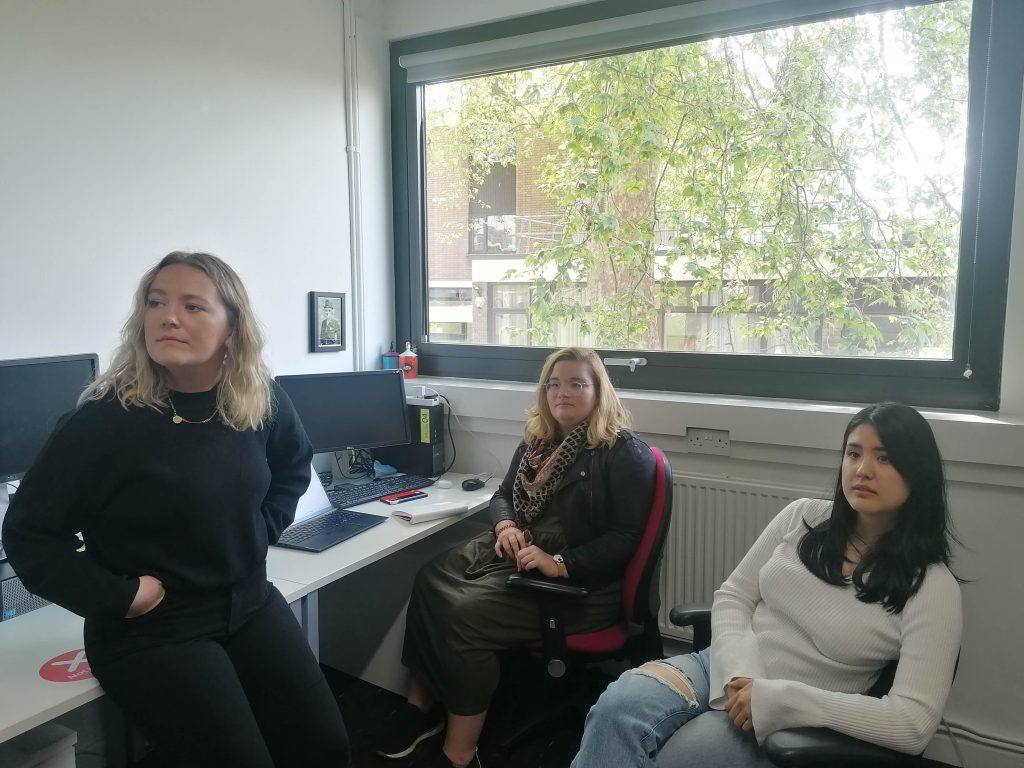You could be forgiven for not knowing the case of Lana Purcell. A single mother born and raised in Camden, Lana went missing on January 17, 2011, at the age of 26. Whilst the police believe the case could still be solved, media appeals and a £20,000 reward have been unsuccessful at producing many worthy leads.
Cases like Lana’s are plentiful – and thanks to cuts to public service funding and a lack of police capacity, many of them do not get the attention they deserve. This is where a group of forensic psychology students at Goldsmiths, University of London come in. Working in conjunction with Locate International, a charity made up of former detectives and members of the public investigating cases of missing persons and unidentified bodies, Goldsmiths’ Cold Case Investigation Team (CCIT) looks to examine existing cold cases to help to improve future investigations.

Despite only beginning to look at Lana’s case recently, the students at Goldsmiths have already begun familiarising themselves with all the details: looking for patterns in events and links between people, as well as providing ongoing support to Lana’s family. One element of their work has involved devising a self-administered interview (SAI), a standardised set of instructions and questions usually used in investigative interviews for witnesses of an incident or a crime. Katie Toolin, a doctoral researcher in Psychology and senior reviewer on the CCIT, says these interviews are incredibly useful as they can be conducted anywhere, save on police time and give people a chance to respond anonymously.
As SAIs have not often been used in cold missing person cases before, this work has required the students to look at memory cues – hoping to take Lana’s family, friends and eventually, the public, back to 2011 and elicit any memories that may help them get closer to finding Lana. This ‘retrieval support’ could involve reminding interviewees of popular songs at the time Lana went missing, or well-known events which occurred that year.
The unit have already begun disseminating the SAI among Lana’s social circle and hope to soon make it available online. Their primary goal is to identify leads that may have been missed in the initial police investigation, which can then be passed on to the police.
“Challenges [in these investigations] include people not being aware that they could help with a public appeal for info, people knowing about an appeal but being reluctant to help, and people needing help to remember information, especially in long-term unsolved cases,” says Fiona Gabbert, a professor of psychology and director of the forensic psychology unit at Goldsmiths. “Since CCIT began, we have designed – and partially completed – a series of experimental studies addressing the above challenges.”
Another case the CCIT are dealing with involves ‘The Gentleman’, a body of a man recovered from the North Sea in 1994, close to Heligoland, a small archipelago 46 kilometres from the coastline of northern Germany. The Gentleman got his moniker from his clothing: loafers, navy trousers, a light blue collared shirt and a stripey tie. However, despite being able to identify specific details such as the make of his tie – Marks & Spencer – and an autopsy which clearly indicates a criminal act led to his death, the Lower Saxony police have been unable to identify the body.
The CCIT have therefore worked alongside the police, helping them to shape up the best media appeal possible for such a long-term unidentified body case. They have also provided advice on how people view police sketches, and who best to target with information. For instance, their research has shown that capturing the person’s likeness exactly does not necessarily make for a more effective police sketch.
As with Lana, part of the CCIT’s investigation into ‘The Gentleman’ has also required them to research and advise the police on how best to cue people’s memories. Meatloaf’s song ‘I would do anything for love’, Pablo Escobar’s death in 1993 and the inauguration of Nelson Mandela in 1994 are just some examples of the memory cues that the team hope will help people to remember if they encountered ‘The Gentleman’ in the lead up to his death.

We take the approach that someone, somewhere, probably knows something that could help find or identify someone,” says Gabbert. “The police often don’t have time to revisit long-term cases. They certainly don’t have time to engage in the various lines of research that we are able to progress.”
Gabbert explains that whilst the CCIT are sometimes limited due to the lengthy process involved in accessing and cross-checking police records, this research is necessary so the team can adequately address the issues in missing persons and unidentified bodies cases.
Left to right: Amy van Langeraad, Professor Fiona Gabbert and Celine Brouillard. Pic: Fiona Gabbert
The team at Goldsmiths are not alone. Locate International currently work with ten UK universities, including students from backgrounds such as criminology, forensic psychology, and cybercrime investigation. The methods of investigation for each team are slightly different, being dependent on the students’ discipline. Most, like Goldsmiths, have their own cold case unit undertaking specific ‘casework’, led by university staff and supported by Locate.
Maureen Taylor, head of operations at Locate and co-director of the Glasgow Caledonian Cold Case Unit, explains how the aim of Locate and the universities is not to take over from the police, but to fill a gap: “Our focus is on those cases that remain unsolved after 12 months and we ensure that everything that can be done to advance a case is done.”
By providing students with the opportunity to learn about real life investigations, gain research experience, liaise with external stakeholders, contribute to academic publications, produce non-academic reports and address real-world challenges, the initiative works as a ‘talent development programme’. “Together [with Locate], our goal is to elicit reliable information from the public that might help provide new investigative leads,” says Gabbert.
Lana and ‘The Gentleman’ are just two cases in a long list currently being looked at by Locate and their teams at the universities. A unit at Leeds Beckett University are investigating cases such as the disappearance of Charles Hovarth-Allan, a Canadian-born British national who went missing whilst hiking across Canada in 1989. Other teams, at the Universities of South Wales and Central Lancashire, looked into the perhaps more well-known case of Damian Nettles, a 16-year-old boy who went missing after a night out with his friend on the Isle of Wight, in 1996.
The university teams provide much needed resources to help in missing and unidentified bodies cases that might otherwise go unchecked. “What we’ve done is use a model where we bring community volunteers and universities together to assist the police with structured reviews of cases to try and find resolutions,” says Dave Grimstead, founder of Locate. “The goal is creating resources at no cost to the families and no cost to the police – there’s no question of this taking away from other demands on the police time or the public purse.”
The results of these investigations, Grimstead says, are incredibly important. “There are 5000 plus unsolved missing person cases and 1000 unidentified bodies. Somehow or another, the resources need to be found to help review and find resolutions to those cases.
“It means a lot to the thousands of families that are affected.”